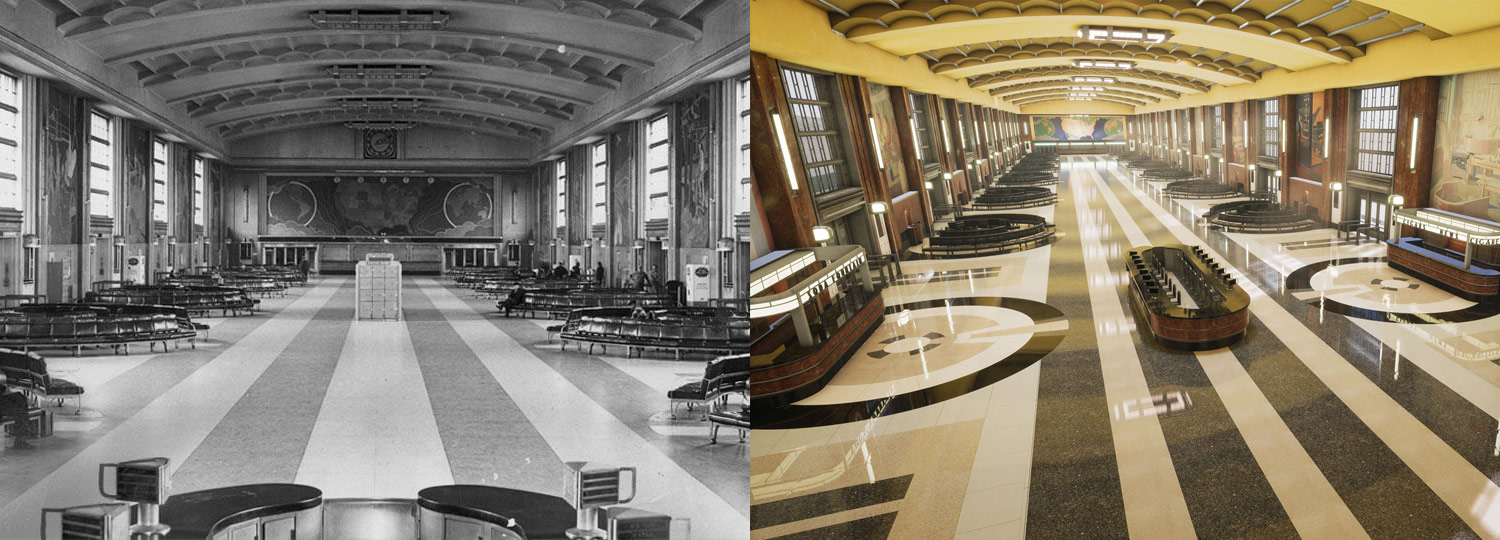Saving Historic Structures With Advanced Virtual Reality
Published Saturday August 24, 2019
No human will ever again experience the original majesty of Notre-Dame Cathedral after the decimating fire this year. No one will ever be able to walk through the Metropolitan Opera House in New York, or stroll through the lobby of the Ambassador Hotel in Los Angeles. The history of these and other iconic landmarks has been bulldozed into silence - until now. Using virtual reality (VR), Kinetic Vision created a living digital legacy for a local landmark that was demolished over 45 years ago.
“Seeing incredible historic buildings fade away to archival black and white photographs was something we knew we could reverse. Using VR we are able to bring these historic structures back to life in fully-experiential 3D - we call it Virtual Reconstruction,” said Rick Schweet, CEO of Kinetic Vision.
The company recently completed a virtual reconstruction of Cincinnati’s famed Union Terminal Concourse. Designed and built in 1933 using the popular Art Deco style, the 450-foot long Concourse serviced 34,000 passengers a day at its peak during World War II. After the war, with the advent of the interstate highway system and steady growth of air travel, passenger train use diminished greatly and the historic Concourse was torn down in 1973 to make way for double-stacked freight cars. Today, only the main building of Union Terminal remains, housing the Cincinnati Museum Center.
Kinetic Vision partnered with digital artist David Lombardi, who built a 3D digital model of the Concourse based on architectural plans, period photos, and other reference material. “With David’s model as a starting point, we used artifacts, archival images, and actual passenger memories to create a virtual environment where people can literally walk through the Concourse exactly as it was the 1930s,” said Schweet.
Kyle Hartshorn, Lead Software Developer for Kinetic Vision, was responsible for overseeing the technical implementation of the virtual Concourse. “This project came with its own set of technical challenges, most stemming from the immense scale of the facility. Our creative team worked hard to balance the level of detail with the amount of model optimization required for a smooth user experience in VR,” said Hartshorn.
The company recently was part of the most successful “1940s Day” event ever held at Cincinnati’s Union Terminal, where Kinetic Vision partnered with Cincinnati Heritage Programs to set the historic mood of the celebration by presenting “The Lost Concourse VR Tour” to over 120 attendees. “It’s great for our team to see the expressions of amazement as people experience the virtual Concourse,” said Hartshorn, adding “the highlight of the event was when a 102 year old World War II veteran put on the VR headset and exclaimed ‘it’s exactly as I remember it in 1945!’ That’s really rewarding for the artists and developers.”
These Virtual Reconstruction techniques are widely applicable to engineering, architecture, archaeology, and other fields. The same processes used to recreate the Union Terminal Concourse can be applied to other historic structures, as well as future structures where architects and builders can literally walk through a building before it is built.
While VR is great for creating navigable immersive experiences of historic or proposed architecture, Kinetic Vision also specializes in XR, or Extended Reality. XR expands on the 3D virtual environments of VR to include physical mechanical systems, virtual cameras and sensors, robotics, software control systems, links to external networks and databases, and much more. Virtual system development using real-time XR simulations has been shown to create dramatic time and cost savings, while also greatly improving project stakeholder collaboration.

